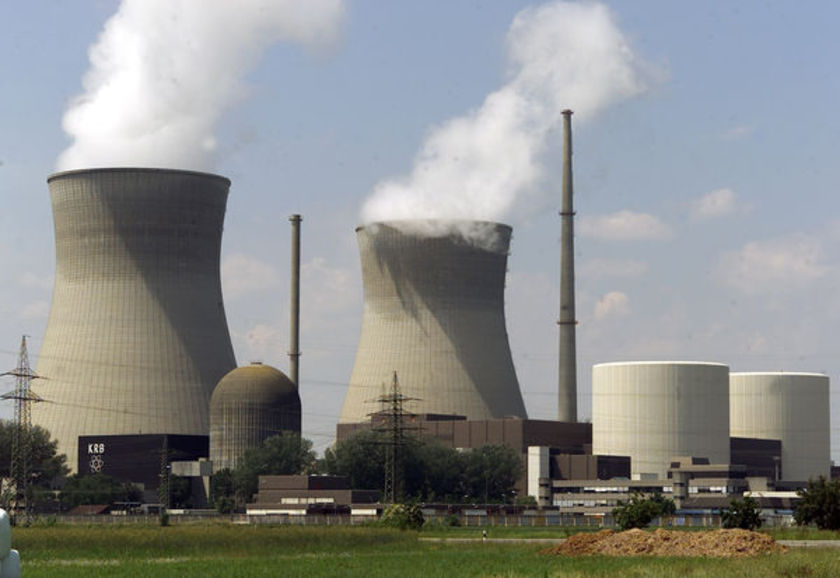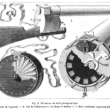The nuclear power industry is having its roughest time since reactors were first conceived in the 1950s.
Health risks are at the core of the problem. At Fukushima, huge amounts of radioactivity continue to pour into the Pacific Ocean. Nobody knows exactly where the three melted reactor cores are—somewhere in or under the buildings—since it is too dangerous to send any worker to find out. The dangerous process of moving hundreds of long rods containing high level radioactive waste has started; any collision or breaking of rods would release enormous amounts of poison into the air.
Closer to home, things are not going well. U.S. reactors are aging and leaking more often as they reach the end of their operating lives. Four reactors have closed this year, the first shutdowns in 15 years. At least one more will follow suit next year. Chief executives of utilities, faced with high costs of maintaining old reactors and skidding stock prices, say they’re considering more closings.
| Media coverage has ignored or made deceptive claims on nuclear health and safety issues. |
But recent major media stories make one think that all is rosy.
On October 21, The New York Times published an op-ed entitled “Fear vs. Radiation: The Mismatch.” Author David Ropeik pronounced that “robust evidence” had demonstrated “ionizing radiation is a relatively low-health risk.” He attributed the refusal of thousands of Fukushima-area residents to return to their homes to “stress, anxiety, and depression.”
Just 29 days later, another Times op-ed claimed adamant that reducing greenhouse gas levels was not possible without an infusion of “carbon free” nuclear power. It ignored the carbon-dependent processes prior to operating a reactor—uranium mining, milling, fabrication, enrichment, and purification. It also cited a “study” that the massive Chernobyl meltdown caused just 50 deaths from cancer in 20 years, far less than the 985,000 deaths estimated by Russian scientists in a 2009 book published by the New York Academy of Sciences, based on over 5,000 articles and reports.
CNN got in on the pro-nuclear action on November 6 by taking the highly unusual step of airing the documentary “Pandora’s Promise.” This film, which drew only 345,000 viewers, makes a strong effort to promote the promises of nuclear power while ignoring or downplaying health and safety risks, including the meltdowns at Three Mile Island, Chernobyl, and Fukushima.
But in addition to what big media is reporting, an equally disturbing trend is what it is omitting—especially at Fukushima, including:
-The ongoing story about the perilous attempt to move rods at containing high-level nuclear waste
-Last week’s study by Fukushima Medical University which documented 26 actual and 33 suspected thyroid cancer cases in local children since 2011 (one or two is normal), and that a staggering 56 percent of the children have pre-cancerous thyroid nodules or cysts
-A November 2 story by the Canadian Broadcasting Corporation announcing University of Alaska-Fairbanks scientists’ discovery of rising radiation levels in Alaskan waters from Japanese fallout—which they estimated will match the high levels at the apex of above-ground atomic bomb testing in the 1960s
Major media coverage has ignored or made deceptive claims on nuclear health and safety issues. Initial daily coverage of Fukushima in 2011 was brief, before tapering off to only an occasional story—even though the meltdown is still not controlled, and involves four reactors. Even the many large protests in Japan against re-starting any of that nation’s 54 reactors because of safety fears go unreported.
Part of the problem is that the research community doesn’t give the media the true facts about nuclear health hazards. After the 1979 Three Mile Island meltdown in Pennsylvania, no articles were published in medical journals on local cancer rates for nearly 12 years. By then, 31 articles were published on the accident’s effects on mental health, in publications like Journal of Trauma and Stress and Psychosomatic Medicine. When the first article on cancer finally did appear, it showed a 64 percent rise in cancer cases within 10 miles of the stricken plant five years after the meltdown—only to conclude that radiation had nothing to do with this epidemic.
But even with available data, the media has failed to report it to the public. There are precedents: for decades, large media issued no stories on studies of tobacco’s health hazards. Long-forgotten journalist George Seldes established a weekly newsletter in 1940 called In Fact: An Antidote to Falsehoods in the Daily Press and reported these findings. It wasn’t until the 1964 Surgeon General’s report on smoking and health did the major media pick up on the issue.
The fault lies with a media that fall short of standards of good journalism so integral to a free society. Along with Fukushima and other meltdowns, a growing number of scientific studies link routine emissions from aging, leaking reactors to high local cancer rates. This “dirty laundry” terrifies leaders of the powerful nuclear industry. Fearing this information will speed the demise of their product, they encourage the all-too-obliging media to say anything to stop the current slide.
Joseph Mangano is Executive Director of the Radiation and Public Health Project.







0 Comments